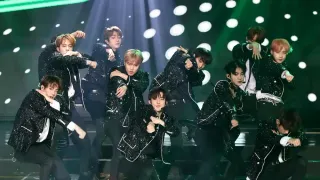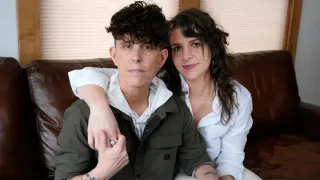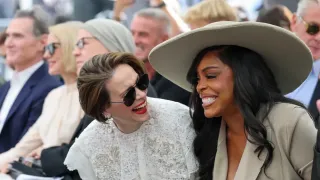
3 hours ago
House of TENS: St. Louis’s Underground Ballroom Designers Are Reimagining Queer Fashion
READ TIME: 4 MIN.
On a spring night in St. Louis, the floors of the Contemporary Art Museum pulsed with music, laughter, and the click of platform heels. This was ALTBALL 2024, a sold-out fusion of gallery party, fashion show, and underground ball that drew over 200 guests dressed in their boldest finery. More than just an event, ALTBALL became a testament to the creative power of LGBTQ+ communities in cities not often spotlighted as cultural capitals. At its core was the TENS Ballroom Experience, a collective that bridges fashion, performance, and activism, and whose members are shaping a distinctly Midwestern take on queer identity through art and design .
The ballroom scene traces its lineage to the Black and Latino queer and transgender communities of 1960s New York, spaces that offered sanctuary from discrimination and a stage for self-invention. Language, dance styles like voguing, and even the very structure of “houses” as chosen families remain foundational to ballroom culture today . In the Midwest, this legacy has evolved into a vibrant, community-focused movement that centers affirming and joyful expressions of queerness in the face of ongoing political and social challenges.
At ALTBALL, the theme “Beauty From The Basics” challenged 17 local designers to create high fashion from everyday household essentials. The result was a runway alive with resourcefulness and imagination: garments crafted from cleaning supplies, hardware, and repurposed textiles, worn by 30 models who brought stories of transformation to life. The event was hosted by DOORWAYS Friends in Deed, a nonprofit supporting housing and health for people affected by HIV/AIDS—a reminder that ballroom’s creative energy is inextricably linked to community care .
Among the evening’s most electrifying presences was the TENS Ballroom Experience, a collective of designers, dancers, and drag performers who have become catalysts for the city’s queer avant-garde. Their name, a nod to the highest score in ballroom competitions , signals their commitment to excellence and visibility for marginalized artists. TENS members are known for their unapologetically bold aesthetics: oversized silhouettes, intricate hand-sewn embellishments, and a playful disregard for gendered fashion rules.
Their runway performances draw on the visual language of classic ballroom—opulence, logomania, and subversive glamour—while infusing it with distinctly local references: nods to Midwestern thrift, DIY ingenuity, and the vibrancy of Black and Brown queer nightlife. For TENS, fashion is not just adornment but resistance—a way to claim space and celebrate identities that mainstream culture often overlooks .
In interviews, TENS members have described their work as both a tribute to ballroom’s history and a response to contemporary challenges. “We want to show that queer joy and innovation don’t only belong to the coasts,” one designer explained. “There’s so much talent and resilience here in St. Louis, and ballroom gives us a place to shine and support each other” . Their influence is felt beyond the runway: TENS regularly hosts workshops, open rehearsals, and mentorship programs for LGBTQ+ youth, fostering a sense of belonging and creative agency for the next generation.
ALTBALL’s “Beauty From The Basics” theme carried a deeper resonance for the TENS Ballroom Experience and their peers. By transforming ordinary materials into garments of fantasy, the designers embodied a central tenet of ballroom culture: making something dazzling out of scarcity, turning exclusion into visibility. This ethos is rooted in the tradition of marginalized communities finding empowerment through collective creation—a lineage that stretches back to the earliest drag balls and continues today in projects like ALTBALL .
The event’s impact extended beyond spectacle. Proceeds benefited DOORWAYS’ programs for housing and health, underscoring the link between creative expression and material support for LGBTQ+ wellbeing . The runway also became a stage for intergenerational solidarity, as icons like Felia Davenport and Brandin Vaughn walked alongside emerging talents and ballroom legends. This spirit of mutual recognition and mentorship is at the heart of ballroom, where houses serve as chosen families and creativity is both a survival strategy and a celebration .
The TENS Ballroom Experience is helping define what it means to be queer and creative in the American heartland. Their style—at once extravagant and resourceful—pushes back against stereotypes about Midwestern conservatism and invisibility. They draw inspiration from ballroom’s rich history, but their work is also in dialogue with contemporary realities: the need for affordable fashion, the politics of visibility, and the ongoing fight for LGBTQ+ rights in Missouri and beyond .
By centering Black, Brown, transgender, and nonbinary creatives, and by foregrounding community care, the TENS collective challenges mainstream narratives about where innovation and leadership in fashion come from. Their impact is felt not just in dazzling runway moments but in the sustained work of building affirming spaces in a region too often overlooked by the national conversation .
The story of the TENS Ballroom Experience and ALTBALL is one of resilience, artistry, and collective affirmation. In a time when anti-LGBTQ+ rhetoric and legislation remain urgent threats, the Midwest ballroom scene offers a blueprint for joyful resistance: a place where fashion becomes armor and celebration, and where every walk on the runway is a step toward visibility and liberation for all LGBTQ+ people.
As ballroom culture continues to inspire mainstream designers, musicians, and artists, it is collectives like TENS—working in community, out of the spotlight, and from the margins—who ensure that the roots of queer creativity remain strong, vibrant, and transformative .






